First impressions matter. When you start a new job, write an email, or meet a team, how you introduce yourself matters. People form opinions fast, often in seconds. So, your introduction must make a good impression. But introductions aren’t about stating your name. They’re about creating connections, sparking curiosity, and leaving a memorable impact.
Imagine walking into a room where no one knows you. Feeling nervous is normal. A good introduction can help calm nerves and build confidence. This guide will help you introduce yourself with confidence. You’ll learn how to do this in person, in writing, or when working with a team. By the end, you’ll know how to craft introductions that open doors and build trust.
Confident Introduction: My First Day as a Junior Marketer
When I landed my first job as a junior marketer, I was really nervous. Walking into the office felt strange. Experienced professionals surrounded me. But I soon realized the importance of making a strong first impression. So, I took a deep breath and introduced myself: “Hi, I’m John. I’m excited to bring my passion for digital marketing to the team.” I shared a project from my internship that boosted engagement by 20%. That simple, confident introduction made all the difference. It helped me connect with my team right away and gave me the confidence to prove myself in the role.
Part 1: How to Introduce Yourself in Person

1. Make a strong first impression by highlighting your expertise.
Begin your self-introduction with a short sentence about who you are and your job history. Whether you have a job, are looking for one, or are just starting out, be sure to showcase your current role or goals.
- “I’m Emily Parker. I’m a software developer who loves making user-friendly applications.”
- I’m Sam Brooks. I’m looking for an entry-level marketing job. I want to use my skills in social media strategy and content creation.
- “I’m Michael Davis. I work as a senior project manager at ABC Corp. I have over 10 years of experience leading teams from different areas.”
Begin with a strong introduction. State your name and professional title. This lets your audience know who you are and what you offer.
2. Use a Clear and Confident Voice
Using a clear and confident voice is crucial when learning how to introduce yourself. Studies show that people decide if someone is confident within seconds of their speech. A steady tone and clear pronunciation show confidence. They also help others understand you better.
For example, instead of hurrying through your introduction with visible anxiety, like:
“Hi, um… I’m Alex… I work in marketing…”
Try this:
“Hi, I’m Alex. I specialize in digital marketing, and I’m excited to connect with you.”
- Pause for a moment between sentences to maintain control.
- Practice in front of a mirror to build confidence.
A clear, confident voice makes your introduction memorable. When you speak with purpose and control, people are more likely to respect and remember you.
3. Showcase Your Experience and Achievements with Relevance
When introducing yourself, always tailor the second part to the situation or audience. Briefly summarize your key accomplishments and relevant skills to establish credibility. Highlight what matters most. This could be your work history, key successes, or your skills.
- “I have over 5 years of web development experience. I focus on building custom websites for e-commerce. My goal is to enhance user experience and boost conversion rates.”
- “I’m a skilled financial analyst. I’ve helped Fortune 500 companies with investment strategies. These strategies led to a 15% annual ROI.”
- “I’ve led rebranding projects for global brands as a graphic designer. This work boosted their social media presence by 30%.”
Link your work history and achievements to your introduction. This will highlight your value and expertise.
4. Wrap up with a smooth transition to the next step.
As you finish your introduction, gently guide the conversation where you want it to go. Ending with a clear purpose keeps the conversation going. Having a clear goal is key. Whether you want to talk deeply, look for a job, or boost communication, keep your aim in focus.
- “I’d love to hear more about your company’s goals and how I can help you achieve them. Let’s set up a meeting to explore potential collaboration.”
- “I’m excited to discuss how my project management skills can support your team. Feel free to reach out if you need more information or examples of my work.”
- “I can’t wait to hear your thoughts on the proposal. Let’s explore how we can move forward with this partnership.”
End your introduction by suggesting a natural next step. This could be a chat, a follow-up, or an action to strengthen the relationship.
Example of Self-Introduction (In-Person)
Hi, I’m Jessica Taylor. I’m a product designer. I have over 6 years of experience making smooth user interfaces for mobile apps. I focus on creating user-friendly and attractive designs.This experience boosts user engagement.
At Tech Innovations, I led a team to redesign a mobile app. This change boosted user retention by 40%. I’ve teamed up with various groups to ensure every design is useful and matches our business goals.
I’d love to learn more about your team’s design challenges and explore ways we can collaborate. Let’s set up a time to chat further.
Part 2: How to Introduce Yourself in an Email

1. Create a compelling and clear subject line.
The subject line is the first thing people see in your email, so it needs to catch their attention instantly. A good subject line is concise, specific, and gives a clear idea of what the recipient can expect in the email. Keep it professional but engaging, and ensure it aligns with the content of your message.
- “Introduction: Sarah | Marketing Expert Looking to Collaborate”
- “Introducing Jack Smith, Web Developer Specializing in E-Commerce Solutions”
- “Exciting Partnership Opportunity: John, Business Development Professional.”
A clear, focused subject line is key to getting your email opened and read. Make it interesting and clear. The recipient should know the email’s purpose quickly.
2. Start with a polite greeting.
The way you begin your email sets the tone for the entire conversation. A nice greeting shows respect and professionalism. It also keeps things friendly and welcoming. Use the right title or first name when you talk to someone. It depends on your relationship with them. For formal emails, opt for “Dear [Recipient’s Name],” while a more casual email might start with “Hi [First Name].”
- “Dear Ms. Johnson,”
- “Hi Emily,”
- “Hello, Mr. Roberts.”
A simple, polite greeting is key when learning how to introduce yourself in an email. It shows respect and makes the recipient feel valued, creating a positive first impression.
3. Introduce yourself in one line.
Keep this part of your email direct and to the point. Your reader should immediately understand who you are, what you do, and why you’re reaching out. State your name and role to build credibility. Also, give a clear reason for your email. This helps the recipient understand the context.
- “I’m Taylor, a content strategist, reaching out to explore potential writing opportunities.”
- “I’m Jamie. I’m a software developer, and I’d like to talk about a potential partnership.”
- “I’m Chris, a digital marketer looking to collaborate on a marketing campaign.”
A short introduction helps the reader see who you are and why they should read your email.
4. Explain your intent clearly.
When introducing yourself in an email, it is important to be concise. Avoid long, rambling paragraphs. Instead, clearly state why you’re writing and how it benefits the reader. Stating your needs helps the recipient grasp your purpose with greater clarity. This reduces confusion.
- “I saw your new product line, and my product design experience could help your team.”
- “I saw that your company is expanding into digital marketing. I’d love to chat about how my SEO skills can boost your online presence.”
Be direct and concise when explaining how to introduce yourself in an email. Clearly state the purpose of your message and how it benefits the recipient.
5. End with a call to action.
Always conclude your email with a clear, actionable request. When you suggest a meeting, offer a solution, or ask for more discussion, help the recipient know what to do next.
- “Would you be available for a call next week to discuss potential opportunities?”
- “I’d love to connect over a Zoom call. Let me know what time works for you.”
- “Please let me know if you’d like to explore this further. I look forward to hearing from you soon.”
A direct call to action helps the recipient move forward. This way, the conversation continues beyond just the introduction.
Self-introduction email example
Subject: Sarah Clark | Exploring a New Software Solution for ABC Supplies
Dear Mr. Johnson,
My name is Sarah Clark, and I understand that you’re the software decision-maker at XYZ Enterprises. I’m reaching out because my company, ABC Tech Solutions, has recently launched an innovative software that could benefit your business. Our product utilizes advanced algorithms to gather customer contact and purchasing data, then organizes it into an intuitive, easy-to-use database.
I would love the opportunity to meet with you and discuss how our software can help streamline your operations and meet your software needs at XYZ Enterprises.
Thank you for your time and consideration. I look forward to your reply.
Best regards,
Sarah Clark
ABC Tech Solutions
123-456-7890 | sclark@abctech.com
Part 3: How to Introduce Yourself to a New Team

1. Start with Gratitude
Starting your self-introduction with a thank you sets a positive tone. It shows you appreciate the opportunity. Thanking your new team for welcoming you is important. A simple, warm thank-you can make a big impact on creating an open and approachable atmosphere.
“Thanks for having me here. I’m excited to join such a talented group.”
This phrase shows gratitude and shares excitement about joining the team. It’s a great way to break the ice and make a memorable first impression. This helps you build good relationships with colleagues right from the start.
- Expressing gratitude makes you approachable and easy to connect with.
- It helps to establish a positive, welcoming environment right from the start.
Expressing gratitude early in your introduction is essential when introducing yourself to a new team. It shows humility, friendliness, and a willingness to collaborate. This small gesture helps you connect with others. It creates a positive vibe for future meetings. This way, people see you as friendly and eager to help.
2. Share your background briefly.
When you introduce yourself, share a brief summary of your background. This helps build your credibility and lets the team see your skills. Highlight experiences that relate to your new role. Show how your skills match the team’s goals.
“I’ve spent five years in digital marketing, specializing in content strategy. I’ve led many campaigns. They aimed to boost engagement and achieve clear results. In my last job, I helped brands boost their social media engagement by more than 40%. It was a rewarding experience.”
Key Points:
- Highlight Key Experience: Mention specific skills or experiences that tie to your current role.
- Share Achievements: Give examples of how your work led to success. For instance, mention percentage increases in engagement or sales.
Sharing your background helps your new team understand your skills and achievements. This allows others to see how you can contribute to the team’s success.
3. Express Your Excitement
Showing excitement about your new role and working with your team sets a positive tone. When you show excitement, you demonstrate that you are not just fulfilling a job, but are motivated to contribute and collaborate.
“I’m really excited about the opportunity to be part of this dynamic team. I love storytelling and digital marketing. I look forward to brainstorming ideas with all of you! The chance to work together on impactful projects truly motivates me.”
- Share Your Excitement: Tell your team what you love about the job and the company. Explain why you can’t wait to begin.
- Focus on Team Goals: Show excitement about working with the team. Emphasize your eagerness to achieve common goals together.
Showing genuine excitement is a great way to introduce yourself to a new team. It creates a positive vibe and helps team members feel more connected to you. This enthusiasm sets the stage for productive, motivating work relationships, making everyone more engaged and eager to collaborate.
4. Offer Help and Build Rapport
Building relationships and rapport with your new team is essential for long-term success. Being helpful and friendly boosts teamwork. It also makes others feel comfortable reaching out to you.
“If you ever need anything or have questions, I’m more than happy to chat. Feel free to reach out. I think great ideas come from talking and working together.”
- Encourage Open Communication: Be friendly and let others know you’re here to help.
- Promote Collaboration: Stress how crucial it is to work together and support each other to meet the team’s goals.
Offering help and promoting open communication builds trust and rapport within the team. It shows that you are a team player, ready to contribute to shared success.
Self-introduction to a new team example
Hi everyone, I’m Alex, and I want to start by saying thank you for having me on the team. I’m excited to be here and to work with such a talented group!
“I’ve been working in digital marketing for the past five years, focusing on content strategy. In my last job, I ran campaigns that increased social media engagement by more than 40%. I’m excited to bring that experience here.”
“I’m really excited to collaborate with all of you and help achieve our goals together. If you ever need anything or just want to chat, feel free to reach out!”
Final Thoughts
Introducing yourself effectively is crucial for making lasting connections. Whether you’re figuring out how to introduce yourself in an email or how to introduce yourself to a new team, the key is confidence, clarity, and authenticity. A strong introduction, whether in person or online, helps you build rapport quickly. When you’re confident, people are more likely to remember you and your skills. Always tailor your introduction to the context, whether it’s a formal email or a casual team meeting. Learning to introduce yourself well is a key skill. It can help you connect with others and build strong relationships.





